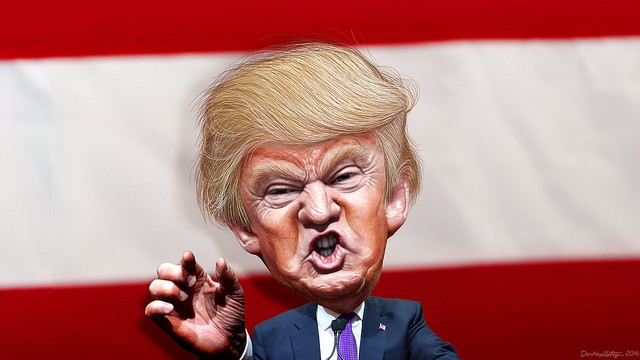Local News
Trump tries to right his campaign, talking tax cuts

Proposes three-bracket income tax system
DETROIT — Promising to “jumpstart America” to a new era of prosperity, Donald Trump announced a revamped economic plan Monday aimed at revitalizing a stagnant U.S. economy by cutting taxes for workers and businesses. He assailed Hillary Clinton as a candidate who would merely extend a Democratic period of old ideas and weakness.
Trying to move past recent stumbles, Trump proposed a simplified three-bracket income tax system that hewed closely to what House Republicans have recommended, the latest indication the GOP presidential nominee is working to put infighting with his party’s leaders behind him. In a shift from the plan he proposed during the primary season, he increased the tax rate that the highest-earning Americans would pay.
With few exceptions, Trump provided more of a philosophical basis for an economic plan than a series of specifics.
He did spell out proposed tax brackets and called for greater child care deductions for families.
As he called for urgent change away from Democratic policies, he envisioned a nation refocused on manufacturing at home and wary of trade deals abroad – a country bearing little resemblance to the globally focused economy of recent years.
“Americanism, not globalism, will be our new credo,” he said in his address at the Detroit Economic Club. “Our country will reach amazing new heights – maybe heights never attained before.”
Delivering his speech from a teleprompter, Trump was interrupted repeatedly by protesters who stood on chairs and shouted at him before being pulled out of the room by security guards. He did not react harshly as he often has in the past, either quietly thanking the guards or simply powering ahead in his speech.
Only days ago, Trump triggered panic within the GOP when he declined to endorse House Speaker Paul Ryan’s re-election or that of other leading Republicans. He sought to put the dust-up to bed Friday by finally backing those candidates while also trying to move past other controversies, like his verbal attacks on a Muslim-American family whose son died fighting in Iraq.
Republicans inside and outside of Trump’s campaign have implored him to shift the conversation back to Democrat Clinton’s perceived shortcomings. On Monday, he obliged, accusing her of jilting American workers and coming up short on promises to constituents.
“The one common feature of every Hillary Clinton idea is that it punishes you for working and doing business in the United States,” Trump said. He said he wants to “jumpstart America” and added, “It won’t even be that hard.”
At her own rally in St. Petersburg, Florida, Clinton assailed Trump’s plans, arguing they would benefit the rich and do little to create jobs or boost the economy.
“His tax plans would give super-big tax breaks to large corporations and the really wealthy,” Clinton said, suggesting they would push the country into another recession.
She has scheduled her own speech in Detroit later in the week. Her campaign says she will call for the largest investment in jobs since World War II.
Trump focused in part on taxes on U.S. businesses, declaring that no company should pay more than 15 percent of its income in taxes. That would be a major drop from the current 35 percent corporate tax rate, though many companies pay much less because of various deductions. He also called for a moratorium on federal regulations, which he framed as strangling businesses.
As in the House GOP plan backed by Ryan, Trump’s proposal on individual income taxes would simplify the code, which currently has seven brackets, down to three, and lower the top rate to 33 percent after deductions from the current 39.6 percent. That’s a departure from the plan Trump unveiled last fall during the GOP primary that envisioned four brackets and a top rate of 25 percent.
“Now the whole party is unified with a tax message,” said Trump economic policy adviser Stephen Moore.
While Trump had tried to paint his original plan as a boom to the middle class, independent groups concluded it dramatically favored the wealthy and would balloon the national debt by as much as $10 trillion over the next decade. His current plan would also add to the debt, but less.
Moore estimated the revised plan would cost about $2 to $3 trillion over 10 years – but said that number would be offset by cuts to federal spending and other savings. Under the plan, he said, highest-income earners would pay essentially the same amount as they do now because lower rates would be compensated by the elimination of deductions.
Trump did not specify deductions that might be eliminated.
In a new proposal, Trump called for allowing parents to fully deduct the average cost of child care from their taxable income. It’s a theme Trump and his daughter, Ivanka, first introduced during the Republican National Convention, part of an effort to broaden the appeal to Democratic voters and sway women ahead of the general election.
The current Child and Dependent Care tax credit includes caps for qualifying expenses that Trump’s plan would alter, though aides said there would be an income limit for eligibility. Trump said he had been working on the plan with Ivanka and planned to unveil it in the coming weeks, along with new proposals on school choice and funding for police.

